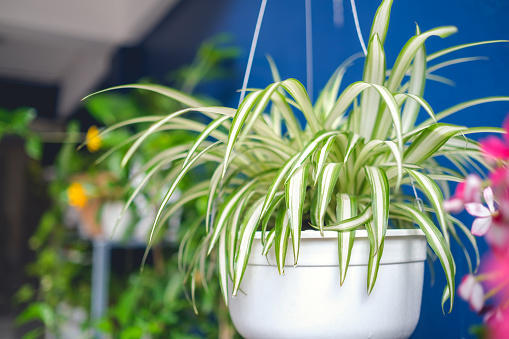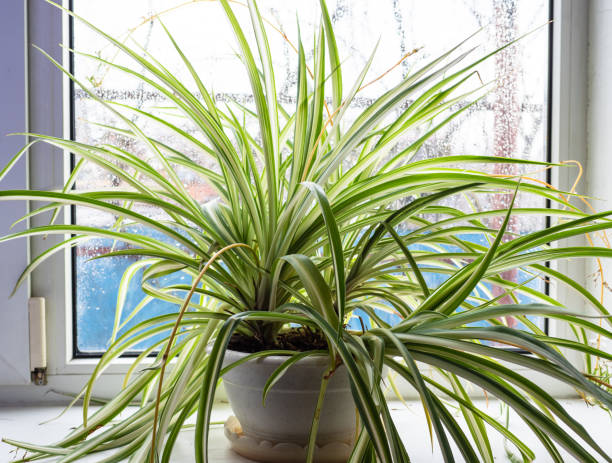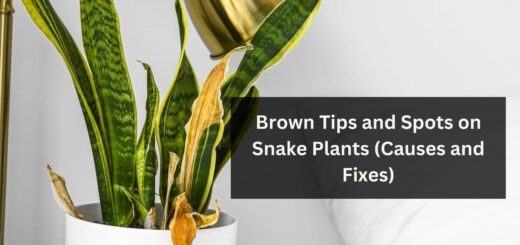How Often to Water Spider Plants? (In-Depth Guide)
Hey folks! Welcome back! we are here with another informative guide that will help you in your gardening career. Have you ever grown spider plants in your home garden? They are known as airplane plants that tend to produce grass-like leaves. If you’re like me, you’re always looking for ways to make your houseplants thrive. And one of the most important things to consider when it comes to plant care is watering. But how often to water spider plants?
Quick takeaways:
- Keep in mind to water your spider plants when the soil of the plant dries out completely and there left no moisture in the plant.
- It can be checked by inserting a finger in the soil about an inch and if it’s dry, then you have to water the plant.
- Even some factors play an important role when it comes to knowing how often to water spider plants, i.e., humidity level, location, size of the plant, and many more.
- In this in-depth guide, we will explore everything you need to know about watering spider plants.
- From frequency to amount and more, read on to learn more about how to keep your spider plants healthy and hydrated. Stay connected to know more about the water frequency of the spider plants.

How Often to Water Spider Plants?
It is important to water your spider plant regularly, but how often to water spider plants depends on a few factors. The type of pot you are using, the size of your plant, the temperature and humidity of your home, and how often you fertilize your plant can all affect how often you need to water your spider plant.
If you are using a plastic pot, you will need to water your spider plant more often than if you are using a clay pot. The reason for this is that plastic pots dry out more quickly than clay pots.
The size of your spider plant also affects how often you need to water it. A small spider plant will need to be watered more often than a large one.
The temperature and humidity of your home can also affect how often you need to water your spider plant. If it is very hot and dry in your home, you will need to water your spider plant more often than if it is cool and humid.
Finally, how often you fertilize your spider plant can also affect how often you need to water it. If you fertilize your spider plant every week, you will need to water it more often than if you fertilize it every month. Let’s know about some of the factors to know how often to water spider plants:
Size of The Plant
When it comes to spider plants, size does matter – at least when it comes to how often you water them. A small spider plant will need to be watered more frequently than a large one, as the larger plant will have a greater reserve of water to draw on.
So, how do you know how big your spider plant is? A good rule of thumb is to measure the width of the pot your plant is in. If the pot is 6 inches or less in diameter, then your plant is considered small; if it’s 7 inches or more, then it’s considered large.
Of course, other factors can affect how often you need to water your spider plants, such as the type of potting soil you use and the climate you live in. But as a general guideline, a small spider plant will need to be watered every 3-5 days; a medium spider plant every 5-7 days; and a large spider plant every 7-10 days.

Humidity
Spider plants prefer humid conditions and will suffer in dry air. If your spider plant’s leaves are turning brown and crispy, it’s a sure sign that the air is too dry.
You can increase the humidity around your spider plant by setting it on a pebble tray, misting it regularly, or using a humidifier.
Types of pots
Another thing to keep in mind is the pot you are choosing for your plant as it will let you know How Often to Water Spider Plants. They are as follows:
Terracotta Pots
Terracotta pots are a great way to grow spider plants. They are porous, so they help to keep the roots of the plant aerated and allow excess water to drain away. However, because they are porous, they can also dry out quickly. This means that you will need to water your spider plant more often if you are using a terracotta pot.
The size of the pot will also affect how often you need to water your spider plant. A larger pot will hold more moisture, so you won’t need to water as often. A smaller pot will dry out more quickly, so you’ll need to water it more often.
When it comes to watering, spider plants like a consistent schedule. They don’t like it when their roots get too wet or too dry. Watering once a week is usually sufficient, but be sure to check the soil before watering to see if it is dry. If it is, give your spider plant a good drink of water until the soil is moistened but not soggy.
Related: Spider Plant Leaves Turning Yellow
Plastic Pots
The best way to water your spider plant is to use a plastic pot. This will help keep the roots of the plant from getting too wet and will also help prevent the soil from getting too dry.
You should water your spider plant every week or two, depending on the size of the pot and how often you water other plants in your home. If you notice that the leaves of your spider plant are starting to droop, then you may need to water them more often.

Ceramic Pots
If you’re using a ceramic pot, for example, you’ll need to water more often than if you’re using a plastic pot. This is because ceramic pots are more porous and allow water to evaporate more quickly.
Second, the size of your pot will also affect how often to water. A larger pot will require less frequent watering than a smaller pot. This is because there’s more surface area for the water to evaporate from.
Finally, the climate you live in will also play a role in how often you need to water your spider plants. If you live in an arid climate, you’ll need to water more often than if you live in a humid climate. This is because the air in an arid climate is much drier and will cause the water to evaporate more quickly.
So, how often should you water your spider plants? It depends on all of these factors. If you’re using a ceramic pot in an arid climate, for example, you’ll need to water it more frequently than if you were using a plastic pot in a humid climate. A good rule of thumb is to check the soil every few days and water when the top inch or so of soil is dry.
Concluding lines
In this guide, you come to know that it is important to know how often to water spider plants. Keep in mind to water your spider plants when the soil of the plant dries out completely and there left no moisture in the plant. It can be checked by inserting a finger in the soil about an inch and if it’s dry, then you have to water the plant. Even there are factors that play an important role when it comes to knowing how often to water the spider plants, i.e, humidity level, location, size of the plant, and many more. Read the complete guide for its proper understanding.
Thanks for reading! Happy gardening!
FAQ’s
1. How do I know when to water my spider plant?
Many people are unsure of how often to water spider plants, as they are prone to both overwatering and underwatering. The best way to know how often to water spider plants is to feel the soil like the aloe vera plant.
If the top inch or so of soil is dry, it’s time to water. Be sure to check the soil before watering, as spider plants are sensitive to both overwatering and underwatering.
2. How do you bottom water a spider plant?
Water your spider plant from the bottom by filling a saucer with water and letting the plant soak for about 15 minutes. Be sure to empty the saucer after the plant has finished soaking.
3. How many cups of water does a spider plant need?
A spider plant needs about 1-2 cups of water per week. If the leaves start to droop, that means the plant is thirsty and needs more water.
4. Why are the tips of my spider plant leaves turning brown?
One of the most common problems with spider plants is that the tips of the leaves turn brown. This can be caused by some factors, including over-watering, under-watering, or even using hard water.
If you think that your spider plant is being overwatered, then the first thing to do is to allow the soil to dry out completely before watering again. You should also check to see if the pot has good drainage and that the roots are not sitting in water. If you suspect that your plant is underwatered, then water it more frequently and make sure that the soil is moist but not soggy.
If you live in an area with hard water, then this could also be causing the tips of your spider plant’s leaves to turn brown. To fix this, simply use filtered or distilled water for your plant.


